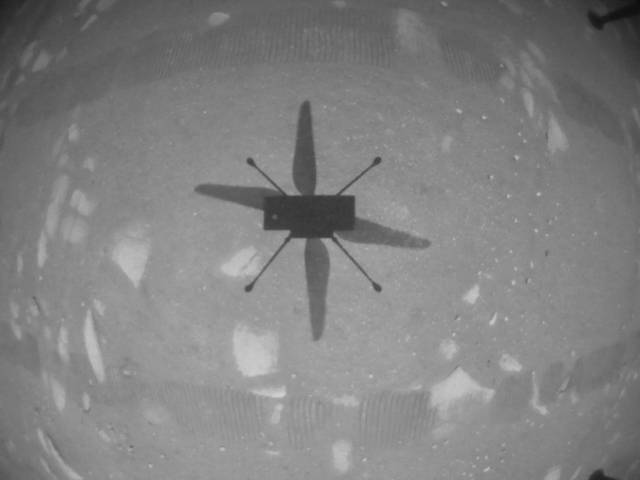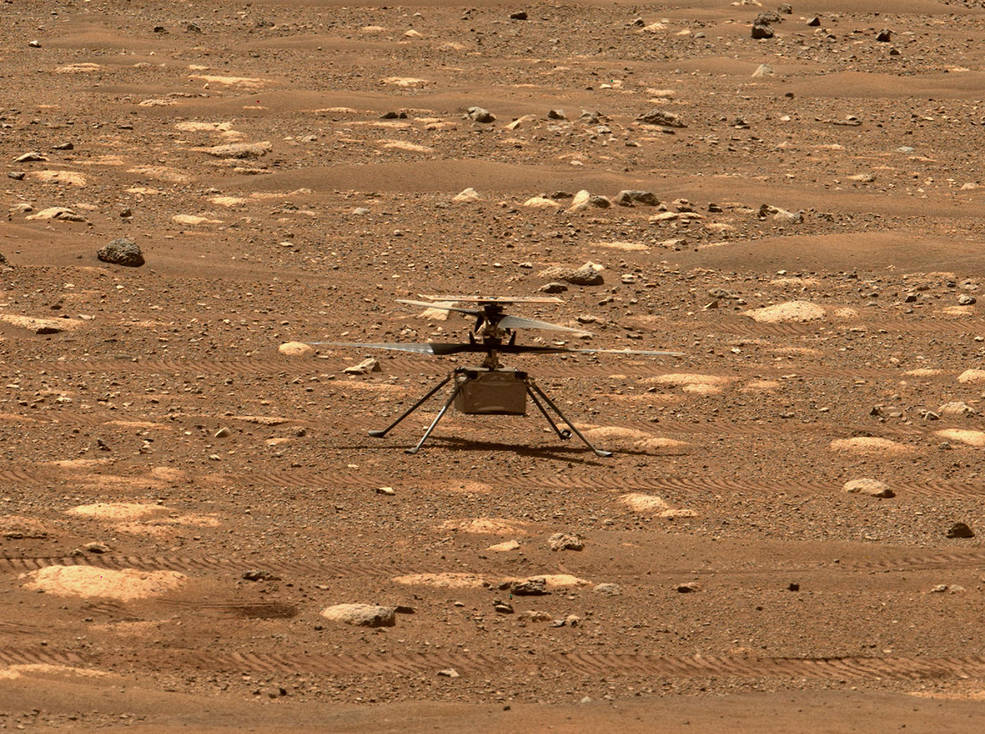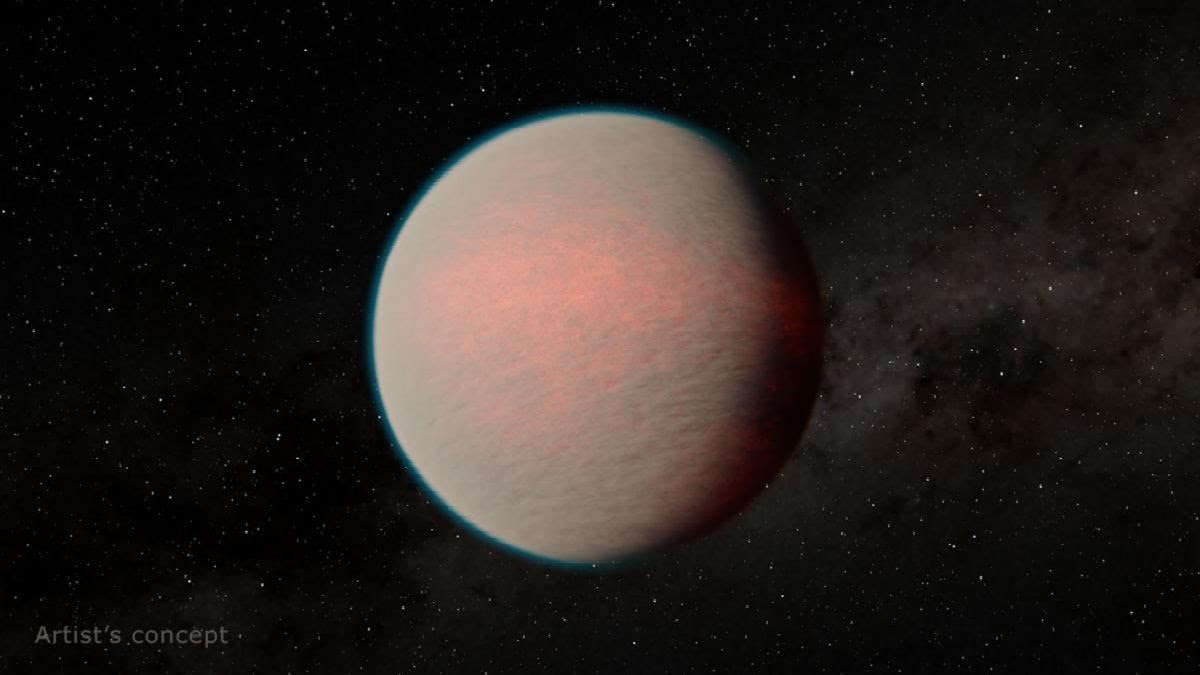I woke up this morning and as I tend to do and opened up the NASA missions page and selected the Perseverance link. I was immediately greeted with the helicopter Ingenuity’s positive test results. The picture above was actually taken by Ingenuity while it was in-flight via a camera mounted on the bottom of the helicopter. As the flight was taken during the day on Mars what we see is Ingenuity’s shadow. Now, what more can show the success of the Ingenuity flight? After reading through the article I was kind of amazed how they didn’t touch on any of the delays and the multiple last-minute rescheduling of the test, but really there’s nothing negative that can be said. Ingenuity flew, the technology demonstration is a success, and now we, NASA, humanity, has another robotic tool to aid us in our far, ever reaching exploratory nature to go where no one/robot has gone before. Plus this adds another checkmark on the list of science experiments that Mars 2020 can call a success.
This is truly a historic flight. It wasn’t that long ago that the Wright Brothers took flight at Kitty Hawk, North Carolina on December 17, 1903. That flight proved heavier than air craft were viable. I always get a little kick out of this tale as the Wright Brothers were known for making bicycles. I find it amazing the two brothers from Dayton, Ohio made the leap from bicycle to airplanes in one fell swoop. In honor of the Wright Brothers, NASA has named the airfield where Ingenuity took its inaugural flight Wright Brothers Field. Now, a hundred some odd years later we’ve got robotic vehicles on the planet Mars looking for trappings of life and possibly our own human origins. We get closer and closer to stepping into the big question territory but the more exciting (or scary) thing is the future is marching head on to meet us and we as humans are destined to be a multi-planet, who knows, multi-galaxy spanning civilization. But let’s not get ahead of ourselves, back to Ingenuity.
Ingenuity went airborne at 3:34 am EDT. This was the time on Mars that gave optimal lighting, energy, and flight conditions. Altimeter data recorded that Ingenuity flew to a height of 10 feet (3 meters), maintained a stable hover for 30 seconds, and then descended to the Mars floor touching down with perfect aplomb. Now spinning up, ascending 10 feet, and then a controlled flight touchdown took care of 90% of all the science the Ingenuity team was looking for. As in fact, these are the three important steps in flying regardless of which planet you’re on, this made for another success for NASA and humanity as a whole.
The flight of course had to be autonomous due to the 11-14 minute delay in radio transmissions between the Earth and Mars. The flight engineering team had to create a program with the flight details and pretty much have the test robotically controlled via software with Perseverance looking on and filming the whole sequence. Once the whole sequence of events regarding Ingenuity’s flight was complete, Perseverance would uplink the data to the overhead Mar Reconnaissance Orbiter and have the data relayed back to Earth via the DSN (Deep Space Network).
So, we can now fly on other planets. Going forward this adds a whole new aerial dimension to any robotic work destined for the planets in our solar systems and to the stars in general. This is truly an exciting moment. Over the years, NASA has brought many firsts and we as Americans feel proud to be home to such a great agency. But remember, as no man is an island, no space agency is an island. It took the efforts of engineering teams around the world including ESA (European Space Agency), JAXA (Japanese Space Agency), ROSCOSMOS (Russian Space Agency), and America’s partners around the world for this concerted effort. We look forward to many more firsts on this Mars 2020 mission leading into the Artemis missions and humanity’s return to the moon, permanently. So we can put this one to rest now. We can deploy helicopters to other planets to further humanity’s science goals. Woohoo!



